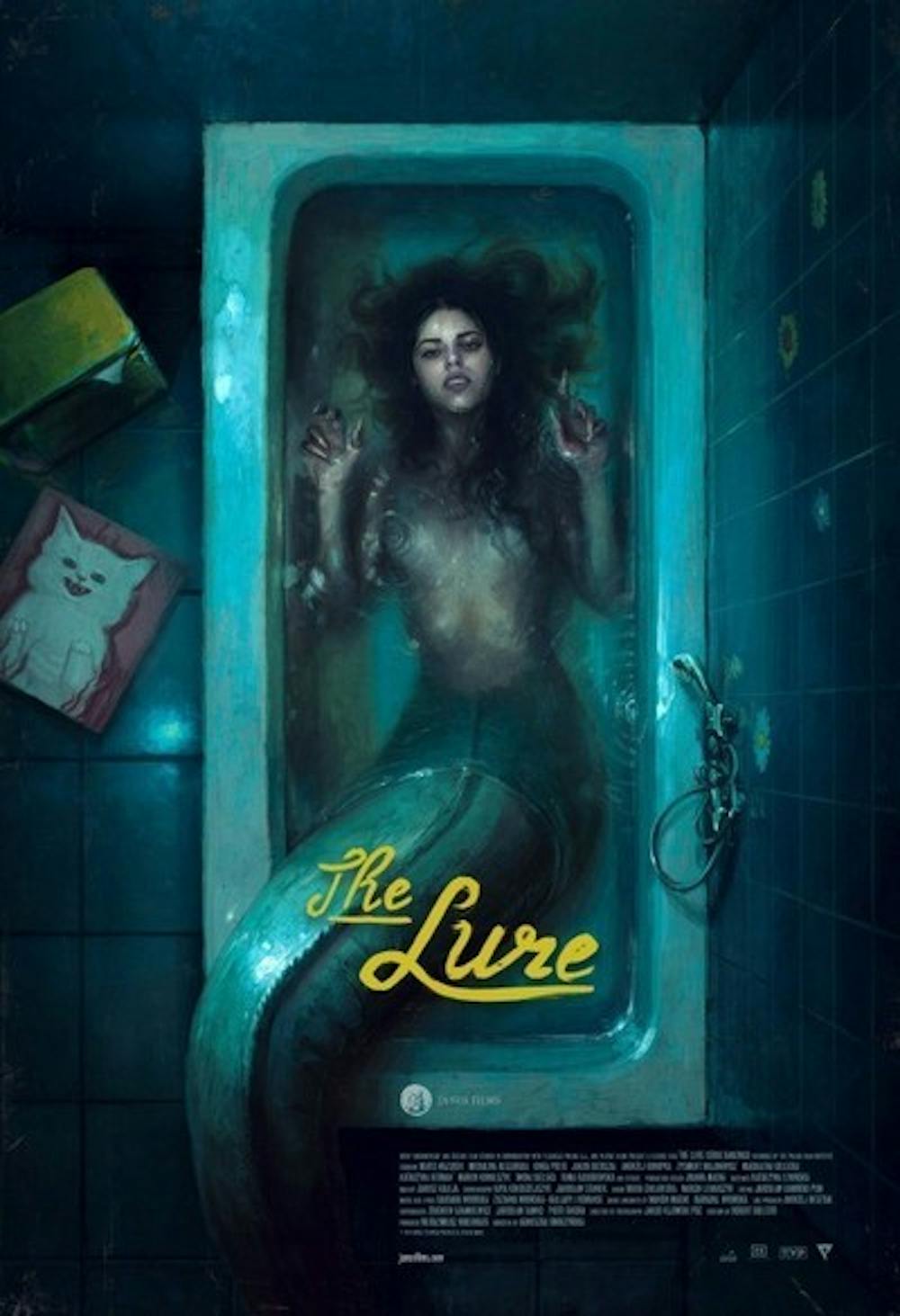“The Lure” is the best Polish rock opera about cannibalistic mermaids you will see all year. Helmed by director Agnieszka Smoczyńska and set in a fever-dream version of 1980s Poland, the film tells the story of two sisters — Silver (Marta Mazurek) and Gold (Michalina Olszańska) — who leave the sea behind in order to pursue discotheque stardom. Despite this whimsical premise, the film’s DNA owes less to Disney than it does the most macabre parts of the original Hans Christian Andersen tale. Smoczyńska’s mermaids are sharp-toothed sirens hungry for human flesh, and their struggle to adapt to earth-dwelling life inevitably results in tragedy.
There is an implicit nostalgia embedded within the delightfully campy visuals, which blend a grimy late-Soviet aesthetic with hazy, lurid and surreal neon tones. The excellent soundtrack by Polish band Ballady i Romanse further blurs genre conventions, incorporating everything from traditional movie-musical numbers — one early montage, which shows the sisters discovering the wonders of a human shopping mall, is so discordantly sunny it could be an outtake from “La La Land” — to synthy Eurodisco tunes and even punk rock.
In this world, the existence of mermaids is not only taken for granted, but it is outright commodified — the crowd goes wild for Silver and Gold’s acts, one of which finds them perched, burlesque-style, atop a giant martini glass as their gleaming tails writhe in full view. As they become rising stars in the underground scene — the sisters are cast in topless, Playboy-esque photoshoots while swathed in fishnets and pearls — their unmistakable otherness becomes a source of curiosity and exoticism to an enthralled audience.
Gold is the more pragmatic and cynical of the two, and she shows little qualms for seducing and devouring humans to satisfy her hunger. Throughout the film, she sees their foray into nightclub stardom as a momentary detour from their grander ambitions — which involve ultimately swimming to America.
Yet romantic Silver, who Mazurek plays with the bright yet guileless charm of a young Sissy Spacek, considers trading in her fins for good when she falls for bass player Mietek (Jakub Gierszał). When she decides to literally tear herself in half for love, it is presented as a theatrical, Cronenbergian surgical procedure set to a wistful piano ballad.
The film shows Silver and Gold’s fraught struggle between humanity and monsterhood as analogous to their own burgeoning sexualities and coming of age, and it makes those comparisons even more palpable through these gory sequences of consumption and transformation. The sisters are frequently depicted as coquettish fetish objects, giggling and stroking their tails for a sleazy nightclub owner (Zygmunt Malanowicz) — the kind of girls you would expect to see as the first victims in any other grindhouse feature. But, they just as easily become aggressors — tearing screaming motorists limb from limb and gorging themselves on their organs.
Though sometimes scant on plot, “The Lure” works because Smoczyńska uses the language of kitsch and B-movie horror to spell out the real, material anxieties that young women have about their bodies and personhood. Silver and Gold would make the Little Mermaid eat her heart out — literally.







